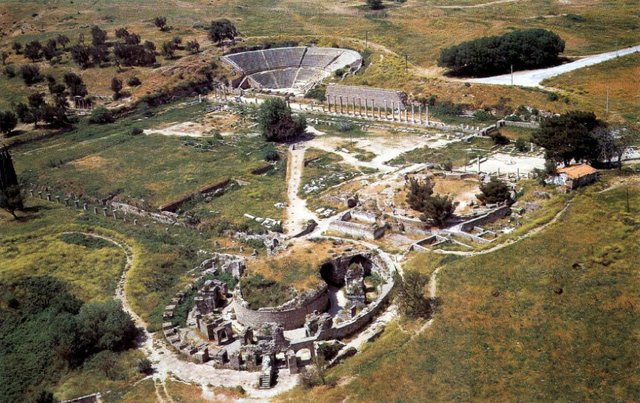One of the Most Important Hospital in Ancient Era/ASCLEPEION(PERGAMON)
The Asclepeion of Pergamon is a sanctuary complex located about two kilometers west of the Acropolis of Pergamon, which was set up for the Greek god of healing, Asklepios.
The Asklepioscult was in Pergamon in the 4th century BC. First, it was hereditary in the family of a certain Archias, the founder of the cult. Under Eumenes II he was raised to state cult. The Asklepieion in its well-known design is due to an expansion in the time of the Roman Emperor Antoninus Pius. However, excavations have also revealed remnants of Hellenistic and even older construction phases. In the 2nd century AD, the sanctuary was the most important Asklepieion in the ancient world.

Prehellenistic time
In the valley of the later Asklepieion some pottery shards of pre-Archaic and archaic times were discovered. The few surviving remains of the oldest buildings, however, come only from the late 5th century BC. Chr. And do not allow judgment on the appearance of the place of worship. The source of the sanctuary, which was located on a so-called "rock bar", was presumably edged at that time and designated as a cult monument by a staircase running from west to east. Judging from the processing traces, the surrounding rock was also processed, creating a kind of cult platform. In the vicinity of some wall scraps were found. Including the later buildings and compared to sanctuaries of similar cult continuity could be concluded on a natural sanctuary.
Road to the Asclepieion
South of the Propylons and thus on the edge of the courtyard was the Roman temple for Asklepios Soter or Zeus Soter Asklepios. The building is a smaller replica of the Pantheon in Rome and had a dome diameter of 23.85 meters at the time of its construction the largest brick dome of the Roman Empire and probably even the entire world. The substructure, built entirely in Greek craftsmanship, was built from neatly cut blocks without mortar dressing. A splendid vestibule corresponding to the neighboring propylon architecture made it possible - also in this case a repetition of the propylone - via an upstream staircase, to access from the west, ie the sanctuary. Seven alternating semicircular and angular niches divided the three-meter-thick walls inside and probably took on cult images. Colorful pilasters and marble paneling adorned the interior walls of the temple, which was founded by the Roman consul of Pergamon in 142 AD, Lucius Cuspius Pactumeius Rufinus.

On the southeast corner of the area was a two-storey and outside nearly 60 meters in diameter large rotunda, whose upper floor was structured with semi-circular niches facing inwards. The roof-top building served the spa and was connected to the cult center of the facility, the sacred, radioactive source, through an approximately 80-meter underground passageway.
South, west and north sides of the courtyard were lined with porticoes, north of the north hall and in the western area was a Roman theater, which could hold around 3,500 spectators with its 29 marble seating rows. It has, as typical for Roman theaters, a strictly semicircular audience round. Other buildings or facilities of the sanctuary served drinking and spa treatments.